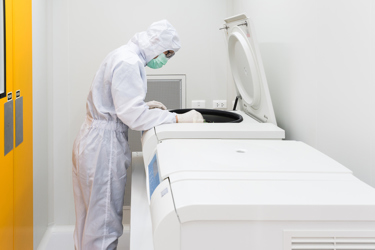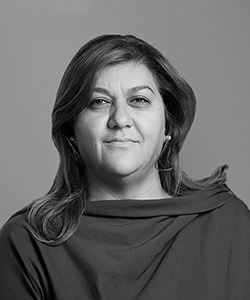Decentralized Cell Therapy Production In Practice

By Matthew Pillar, Editor, Bioprocess Online

Distributing the manufacture of autologous cell therapies to clinical and hospital settings to minimize time, cost, and logistics challenges is a popular conversation in biopharma circles. While many discuss it, Dr. Helen Sabzevari’s upstart biopharma Precigen is doing it.
BioProcess Online recently published an article authored by our good friends and biopharma facilities experts Herman and Erich Bozenhardt that addresses a paradigm that—and I’m projecting here—almost certainly makes them at least a little bit uncomfortable: the growing role of the hospital in the production and manufacturing of ATMPs, and more specifically, autologous cell and gene therapies. The potential discomfort I’m projecting on them lies in the uncertainty of how distributed procurement, processing, and administration of these therapies will be executed from the capital manufacturing equipment, quality oversight, and regulatory perspectives. It’s a new concept, taking shape in a new field of medicine, where just a handful of therapies have been approved at great effort, at great cost, and in tightly-controlled facilities. In those facilities, quality and engineering is closely managed for volume, impurities, gene expression, growth, and virus burden.
Envisioning this concept of a distributed autologous cell therapy model, whereby the patient donates her own cells in a hospital setting and those cells are processed, re-engineered, and qualified on-site before being re-administered to the patient, allows us to entertain a host of efficiency, cost-reduction, and patient benefits. It also opens our eyes to a whole new set of challenges in an already challenging field of therapeutics. What are the on-site processing equipment requirements? Who is qualified to operate that equipment? Who is responsible for quality control? How do cell therapy production operations distributed across potentially hundreds of hospitals change the cGMP, auditing, and regulatory requirements?
On episode 38 of The Business of Biotech podcast, we sat down with the CEO of an emerging cell therapy company that aims to address these challenges as it works to make distributed, hospital-based cell therapy production a scalable reality. Helen Sabzevari, Ph.D., is CEO at Precigen, a new company spun out of Intrexon in 2018. Precigen is already working on a six-candidate clinical pipeline and a preclinical pipeline that’s 10 candidates deep, all of them cell and gene therapeutics focused on addressing a host of oncological indications, autoimmune disorders, and infectious diseases.
Addressing The Barrier To Commercial Cell Therapy Success

“The platform really goes back to the concept of using a patient’s own T-cells or immune cells and genetically modifying and multiplying them in such a way that they can recognize the tumor that exists in the patient’s body,” explains Dr. Sabzevari. While the fundamentals of this therapeutic approach are well-stated, particularly in hematological diseases, manufacturing complexity and its resulting cost have limited adoption. In the current scenario, transfection, expansion, and quality control are handled in a centralized GMP facility, resulting in a precarious logistics situation and a weeks- to months-long manufacturing timeframe that contribute to a price tag of up to $500,000 per dose, which is unappealing to patients and payers alike.
“Manufacturing must become easier, faster, and more precise,” says Dr. Sabzevari, “and it has to be accessible to patients around the world. That’s why we started moving toward a platform that would enable genetic manipulation of a patient’s T-cells and the delivery of non-viral plasmids in the hospital setting.”
Overcoming Obstacles To Decentralized, Non-Viral Manufacturing
The feasibility of viral transfection in a hospital setting is a non-starter, which is why a non-viral approach is critical to Precigen’s strategy. That approach presented challenges that Dr. Sabzevari was confident Precigen could overcome. “Cell viability after transfection is a major issue in the non-viral approach, as are drug homogeneity and quality control,” she admits. “We addressed those issue one-by-one, ultimately developing what we call the UltraCAR-T manufacturing approach.”
After on-site T-cell extraction from the patient, Precigen’s technology engineers three genes; one for the recognition of the tumor, an mbIL15 that Dr. Sabzevari describes as the “backpack” that provides maintenance resources to the CAR as it goes about its work and enables its rapid expansion and expression when it encounters the antigen, and a “kill switch” that eliminates the CAR cells if necessary.
With the aforementioned UltraPorator non-viral delivery system it developed, Dr. Sabzevari says the patient’s cells are transfected in a clean room of a hospital or bone marrow facility overnight and transferred directly to the patient the day after they’re extracted. “This is enabled by our genetic engineering approach, which enables expansion in-vivo rather than in a centralized manufacturing facility,” she says. “Currently-existing non-viral platforms require much longer transfection time and require far more intervention by a technician, which can introduce failure points,” she says. “We’ve developed a semi-closed device that allows the transfection of 4 billion T-cells in under 12 minutes, then washes and bags the plasma in preparation for incubation, QC, and administration to the patient the following day.” This truncated timespan, she says, greatly reduces cost and improves efficacy, as it results in younger and more active cells.
Dr. Sabzevari says she envisions a future state in which, once the oncological indication is realized, clean room hospital employees will simply receive instructions on which plasmid and CAR to pull, dependent on the indication, and begin the process described above.
Are Hospitals Ready For This New Paradigm?
While the promising concept playing out in Precigen’s Phase 1 clinical trials is ample with “upside,” is the healthcare system ready for such a monumental transition? Dr. Sabzevari doesn’t back down from that question. She offers an emphatic “yes,” and backs it up with a precedent. “When bone marrow transplant technology was developed, the question was ‘oh my God, how does a hospital do a bone marrow transplant?’ Today, it’s a matter of routine practice. Cleanrooms and SOPs were developed for that purpose, and the same lessons can be applied in our approach to autologous cell therapies.”
Tech transfer, in this case, is to the hospital, and the platform eliminates the necessity of on-site CMC and cGMP professionals.
Early data from Precigen’s trial activity is positive, though Dr. Sabzevari cautions that it’s early. The dose escalation and efficacy studies that will ultimately tell the tale have yet to happen. In the meantime, the work Precigen is doing on the razor’s edge of decentralized cell therapy will surely prove foundational to the future of the field.
Learn more about Precigen from Dr. Sabzevari on episode 38 of the Business of Biotech podcast. Get the Bozenhardts’ advice on risk assessment, decentralized facility design, and forging hospital partnerships here.
